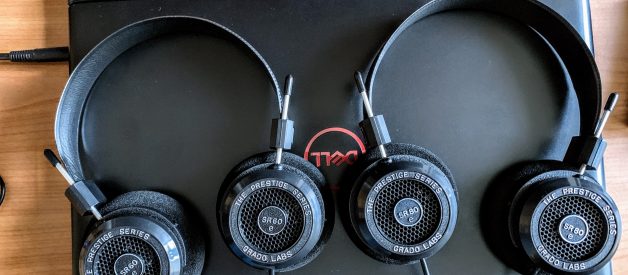Is the SR80e worth the $20 upgrade?
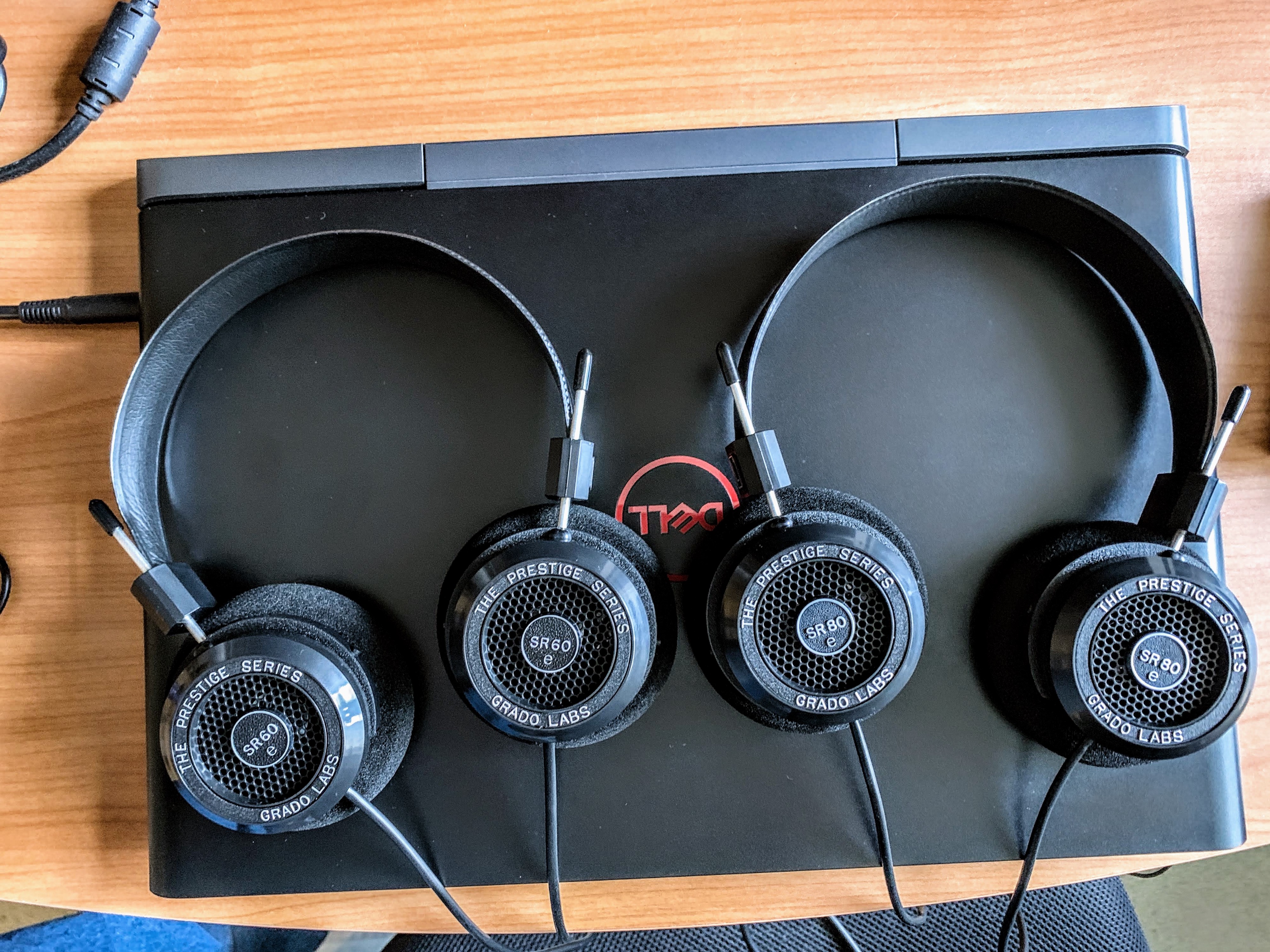
Before this review, I pondered buying Grado headphones for years. But their famous eccentricities always pushed me away.
I?m happy I finally took the leap.
Made by hand in an unassuming brick building in Brooklyn, NY, Grado headphones defy all modern audio design logic.
They don?t have flashy designs. They don?t have cool features. They don?t follow any of the accepted industry standards for what a sound signature should be like.
Instead, Grado headphones are built out of metal, heart, and a whole lot of treble energy.
They?re kind of awesome? but I don?t think more than half of my readers would enjoy listening to them more than once.
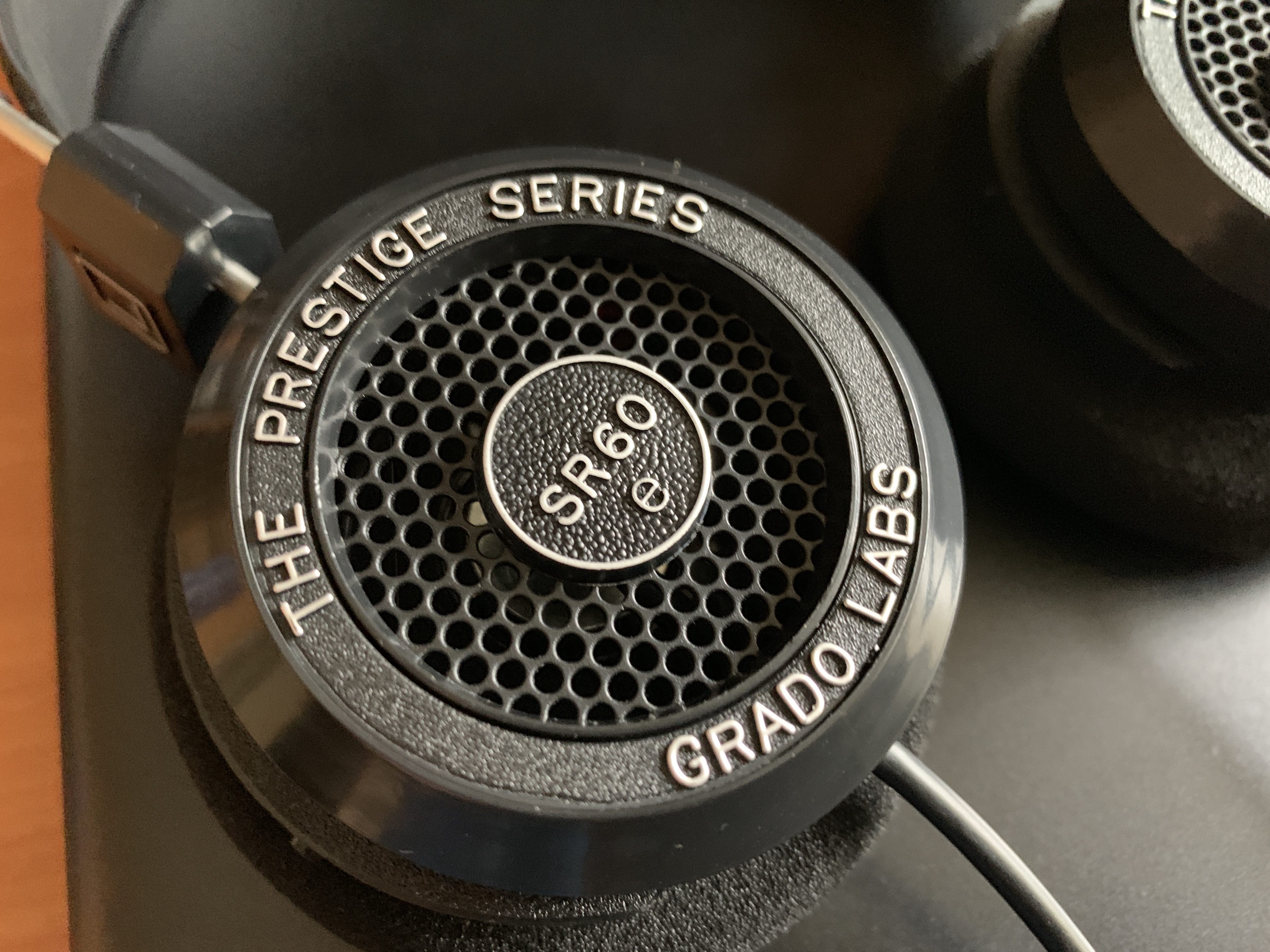
OVERVIEW
The Grado SR60e and SR80e are open-back wired headphones that sell for $79 and $99, respectively. They almost never go on discount.
On the outside, the headphones look identical. Both feature the same venerable industrial design and ear pads. Both have a somewhat-thick permanently-attached 4 conductor cable with a 3.5mm plug on the end.
For $20 extra, the SR80e offers ?De-stressed drivers.? Grado doesn?t talk about what this process involves, other than to say it?s proprietary, and I don?t want to rip my headphones apart and look for tiny build differences.
If I had to guess, it?s some combo of doping and damping. ?Doping? the driver involves slathering it in a solution or polymer of some kind in order to change its relative thickness and rigidity, hopefully improving its performance. Different damping materials inside the cup can also change the response of the driver significantly.
Does it make a big difference for the 80e? Well?
There is a tiny difference in the audio quality, but I couldn?t tell you to spend $20 for it instead of just using EQ. If you?re just curious about Grado and would rather try their cheapest pair, that?s totally fine.
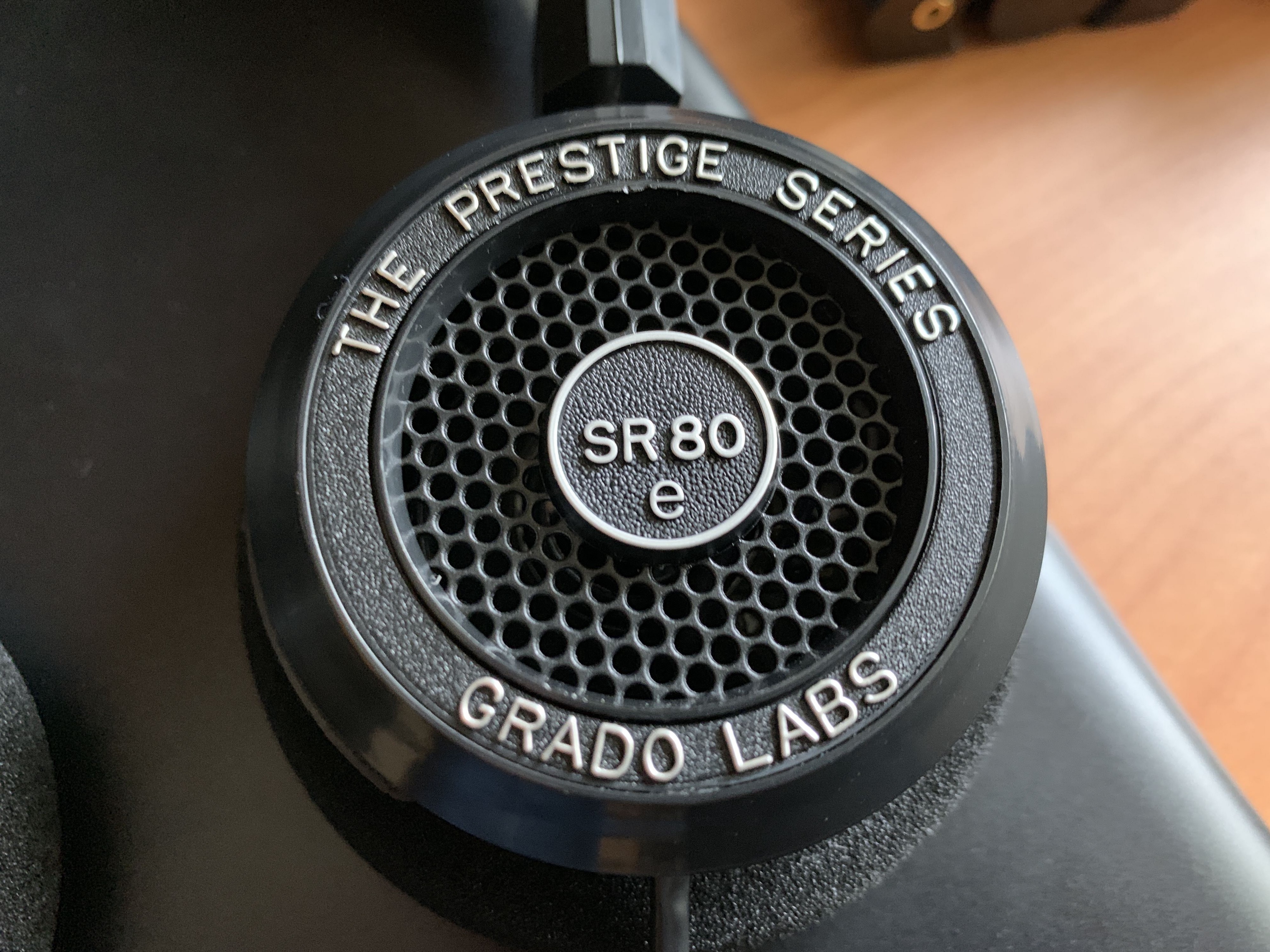
SOUND QUALITY
Grado headphones sound completely different from any other dynamic driver headphones I?ve ever used, open back or otherwise.
They?re initially baffling. And after several weeks of use, they?re still a wild, weird, and ?acquired taste? listening experience.
They feature a natural, smooth bass response with just enough oomph to bring in some warmth on music where it?s present. The DT990 is more prominently bassy, as are some of Sennheiser?s open headphones, but both of those are more expensive.
I personally like the Grado bass much more than the low end on the Philips SHP9500s.
I went in not expecting these to have any bass response at all, so the fact that they sound so natural and pleasant on the low end is great.
If you?re a fan of midrange accuracy, Grado has you covered. The tone, texture, and feel of the midrange is incredible, rendering vocals and instruments with impressive detail. It?s wonderful to listen to in a way normally not found on such cheap headphones.
And then the STABBING begins.
I?m not normally as treble sensitive as some folks. But everyone will notice the sharp treble on these.
The upper mids and treble here have boundless energy and power, with random spikes and peaks that you will absolutely notice, perhaps even on the first moment you listen.
This isn?t like the Beyerdynamic range where it?s something you could get used to. This is intense, shocking, vibrant, brilliant nonsense. No headphone should probably be balanced this way, but Grado went for it.
On the wrong songs, you?ll hear a sibilant spiky mess, especially if you like to listen at high volumes.
But if you?re like me and you don?t listen at high volumes, and you?re a fan of acoustic material and female vocals, the results are sometimes magical.
The sound signature here is a great example of measurements not being everything, and of the subjective nature of sound.
It?s such a balance of smoothness and sharpness that it defies the pattern of every other headphone on the market. On some tracks they sound bright and annoying, and on others they provide a warmer ?live sound? sort of experience.
That ?De-stressed? driver on the 80e model does help the problem, a little bit.
I hear the SR80e as ever-so-slightly warmer than the SR60e, and thus, it?s a little less potentially stabby on the ears, especially at louder volumes.
I don?t personally think that it?s worth the $20 extra, or an upgrade if you already own the SR60e, but I was relieved that there is a slight difference and it?s not just another example of audio snake oil, and I?m happy I decided to try them out.
I?ve used these both for far longer in my review process before writing this than any other headphones I?ve ever tested. I bought the SR60e?s almost a month ago, and was so struck by their weirdness that I immediately bought some 80?s as well to compare.
They were that exciting and that confusing.
Don?t start with these as your first ?nice? headphones. Don?t listen to them at high volumes. And don?t be afraid to switch to a new track if you find them sibilant.
But as a second pair that really does something so different and interesting from literally every other headphone on the market, they?re kind of awesome.
I?ve had a great time using them in a quiet room in my home at a moderate listening level.
Also, I found their peculiar sound and decently wide soundstage to be nice for gaming, for whatever that?s worth. I think more gaming headsets should experiment with open back designs.
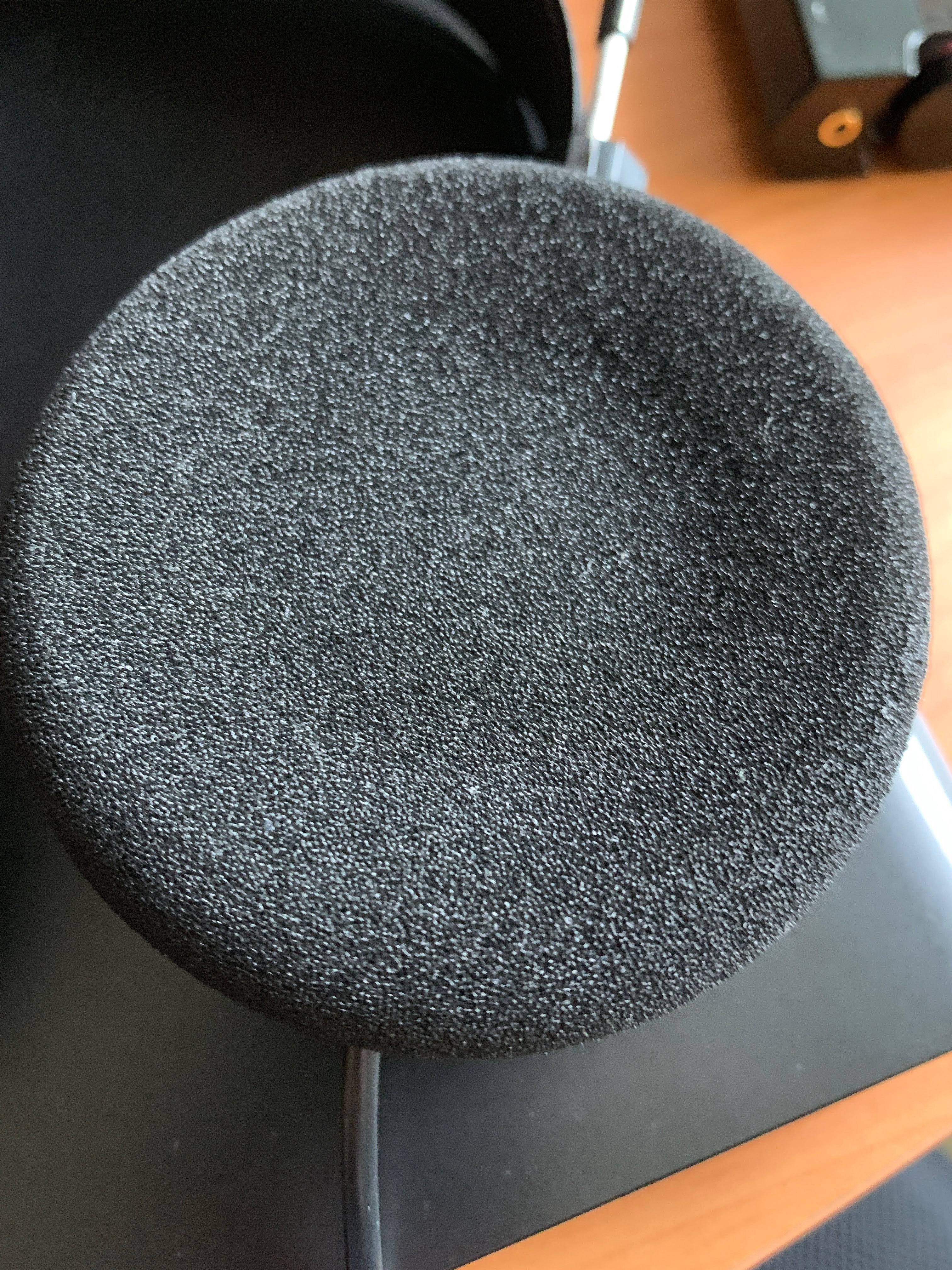
COMFORT
A weird combination of nightmare and great.
You can adjust Grado headphones into a nigh-infinite number of positions. The headband is a solid piece of bendable aluminum, and it can really take the bending.
Go nuts. Lower or raise the clamp to your heart?s content. Change the shape of it to better suit your head. Do whatever you?d like!
Just don?t expect comfort on your very first use.
The height adjustments for the ear cups are similarly flexible. They?re just simple posts held into plastic clasps with friction, and they can slide up and down smoothly into whatever position you?d like.
I spent so much time tweaking the fit of these for the first week that I had to take a break before I ruined the fun. You don?t need much clamp to get the right sound, so I?d personally advise bending the headband out a little from its stock configuration, which is quite clampy.
The ear pads are both softer and larger than I thought they would be from pictures and videos. So many folks have complained about the ear pads being too rough or too scratchy, but I found the simple foam just fine. It even notches nicely around my glasses arms then rebounds back to its normal shape after a few minutes of not wearing them.
Once you get the fit dialed in, these are a delight to wear. They?re light, and have a barely-there feeling that?s pleasant for long listening sessions. But getting to that point for my personal large head shape took a lot of work.
If you?re not willing to bend the headband, you?ll probably experience ear pinching or head discomfort in about 15 minutes.
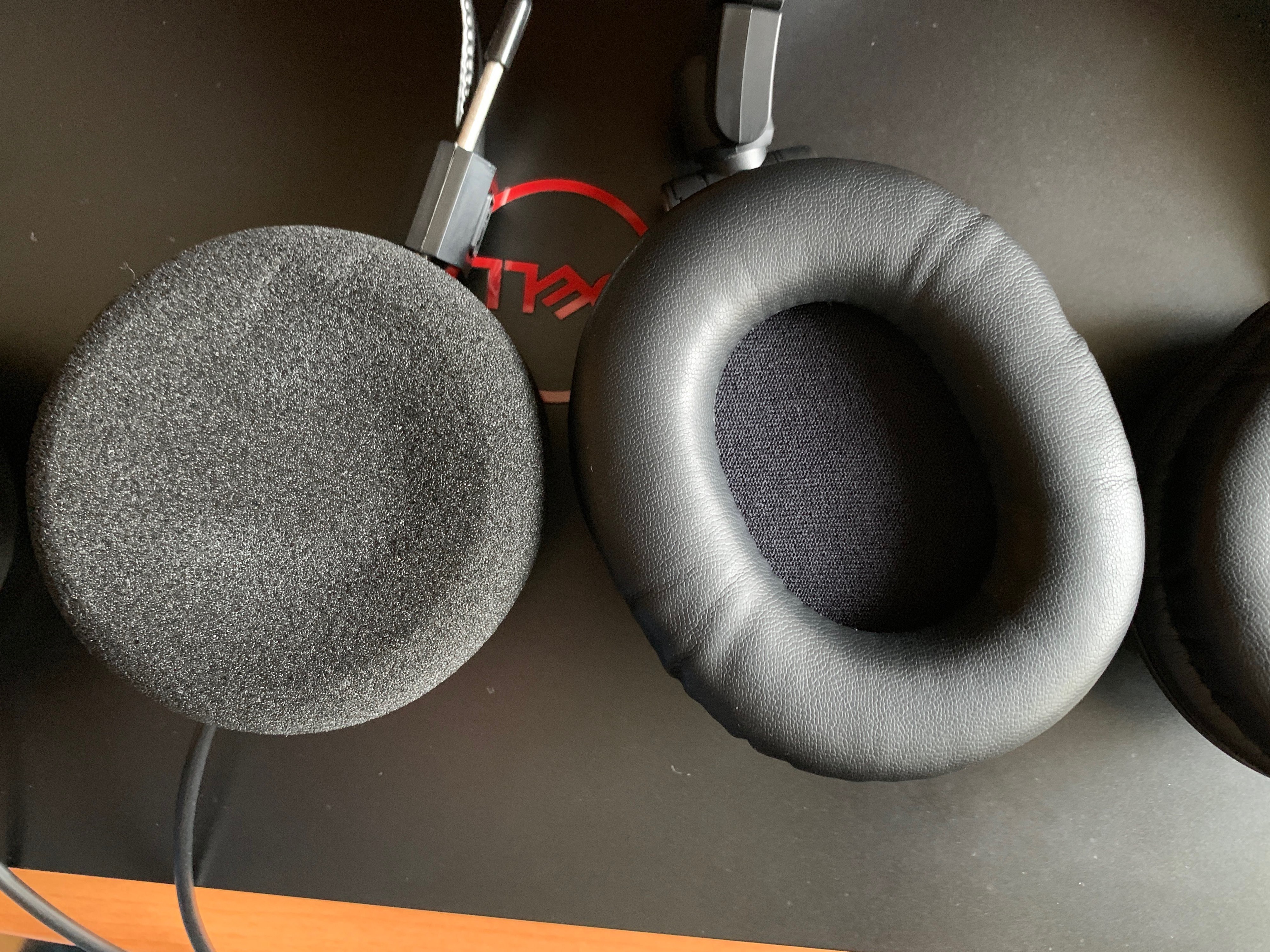 Pad size comparison between the SR60e and the M50X. These are really big on-ear pads!
Pad size comparison between the SR60e and the M50X. These are really big on-ear pads!
DESIGN/BUILD
Every Grado headphone uses the same basic design, and they always have for a couple of decades.
That?s both fascinating and ridiculous.
While other companies are out here refreshing their design language every 18 months, Grado is like NO. MAKE IT THE SAME AGAIN.
The headband is a strip of leatherette stitched around a solid bar of metal, and it?s way more durable than I was expecting. I?ve bent and flexed my headbands in numerous different directions and they?re as impressively solid as they were when I first took them out of the box.
If you?re looking for nice design touches or good materials, you won?t really find them outside the sturdy headband. The cups are basic plastic, attached with little rods to thin plastic clamps. The cups also don?t have any kind of stoppers on them to prevent them from spinning endlessly around and tangling up the cord.
The little rubber bits on the top of the height adjustment posts make squeaking noises when they run into the headband.
Still, the look and feel of these grew on me. After all the reports of cheap build and broken attachment points I?d seen online, I expected these would feel like paper.
But they?ve got a bit of durability in just the right spots, and their look, while in no way modern or frilly, has a simple industrial sensibility to it that I enjoy.
I?m not saying you should hurl them at brick walls, but for some basic home use, they?re built well enough for this price.
These don?t fold down. The cable doesn?t detach. They require you to bend them and shape them to get the right fit. And they come in a basic black as the only color option. They?re the polar opposite of fashion headphones.
But they?re still adequately functional, and sometimes that?s all you need.
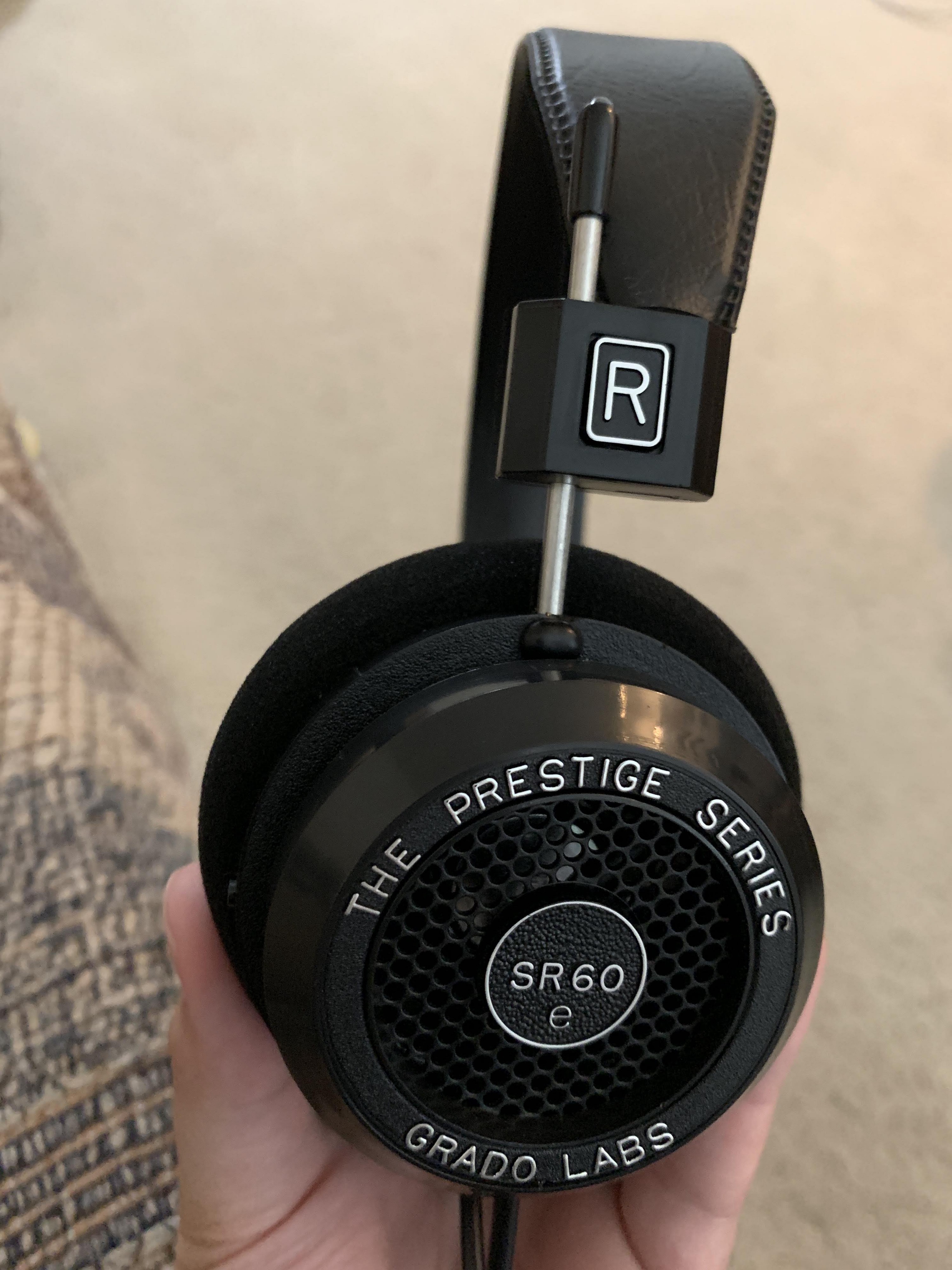
FEATURES/EXTRAS
None! Unless you count a 6.3mm adapter as an extra.
The cable is thick enough and durable-feeling, and if you step up to the models that cost more than the SR80e, the cable inexplicably gets thicker.
That hints at something I personally find entertaining. Grado has mastered the art of selling a wide variety of products that offer very tiny upgrades.
But know this: if you?re shopping for a Grado, they all feature the same core sound signature, more or less.
You?re getting a great deal at $79 for the SR60e, and above that?you?re paying for various small improvements that have been carefully selected to try and part you from more of your money.
I don?t think they?re scamming people exactly, but don?t let your brain?s natural desire for more get the better of your wallet, especially if you?ve never heard this weird sound before.

FINAL THOUGHTS
I am ultimately happy I bought two pairs of these even though their sound is borderline un-listenable and piercing on some of my favorite tracks.
The $99 studio-style headphone market is more-or-less conquered by the likes of the 7506, M40X, and other popular closed back headphones. You know what you?re getting with those.
Good open back headphones at this price are more rare, and the Grados are a strong choice in spite of their weirdness.
These two Grado models offer a totally unique experience, and feature better raw audio quality throughout much of their frequency range than some other cheap open back headphones.
(Except the Porta Pros and KPH30i. Those are so much more listenable and relaxing than these, especially for newcomers. Just get those instead if you?re looking for a first cheap open headphone).
If you?ve decided to take the Grado plunge, know going in that they don?t care if you?re not a fan of treble, because it?s their favorite thing in the whole world. And they render certain genres music more interestingly than anyone else? when they aren?t too distracted by shouting at you about treble.
